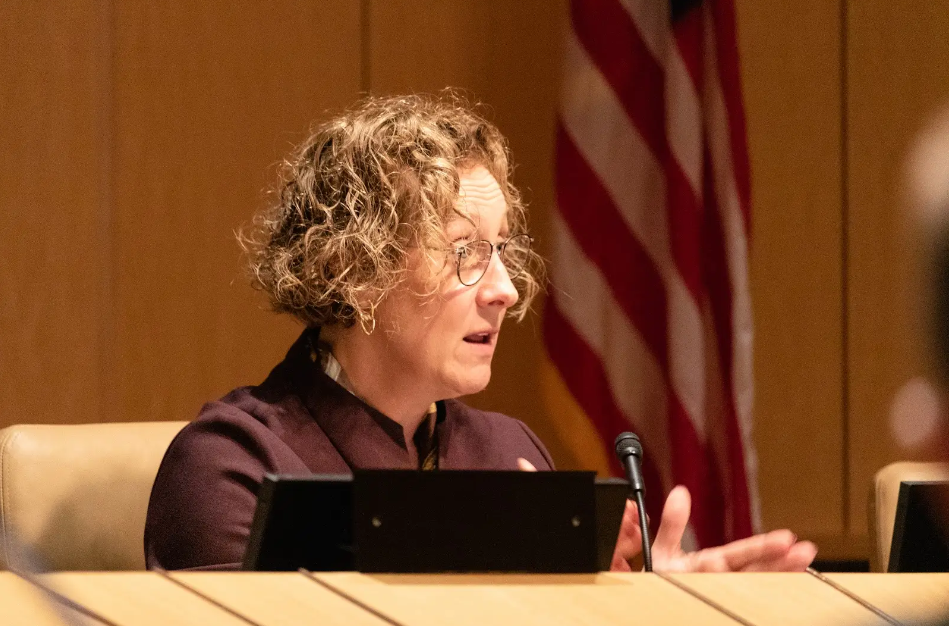According to the University of Minnesota’s Veterans Services (UVS) office at Bruininks Hall four years ago, student veterans totaled over 1500. However, a recent projection is smaller, with just under 900 veterans enrolled at the University.
Students come from all over the country, and the world, to be here at the University. It’s no different for student veterans who end up at the University for a degree.
Status of the current student veterans group

Marianne Reilly, the Student Veterans Association of Minnesota (SVAM) president, spoke about the current attendance in their meeting room (B18 of Johnston Hall) and how the pandemic has impacted student veterans.
Reilly said when she joined SVAM, the group had dealt with financial challenges in the past but over time, they were able to pull out of it. However, their financial sustainability is now in doubt.
“There used to be a lot more people congregating here, but since the pandemic, there was no need to come to the campus,” Reilly said. “There has been a precipitous drop off in attending our weekly Wednesday meeting.”
Marybelle Kim, who is majoring in Industrial Engineering, is one of the few non-veterans who spends time at the SVAM lounge. She had been friends with Marianne for quite some time.
Kim said she is learning more about veterans and what it is like to hear the veterans talk about returning from military service.
Holden Willmore, the SVAM vice president, said the group is seeking Campus Life Program status and would like to be overseen by UVS, which would help with providing the resources to address financial operations and sustainability.
“We haven’t had great visibility from the University community and that kind of hurts to try to have enough members to report as officers for registering as a student group,” Willmore pointed out.
Willmore said the constant turnover for student veterans holding officer positions in SVAM can mean a loss of institutional knowledge.
“It is true that we have had problems with recruiting more officers to fulfill vacant positions, as most of these veterans do not live on campus and they commute from a distance to be here and, most likely, don’t have the time to spend as they have to get back to their homes,” Willmore said.
However, Jabra Kawas of Veterans Affairs, said in an email to the Minnesota Daily that while UVS remains invested in partnering with the SVAM, their office does not have the capacity to sponsor them as a Campus Life Group.

Varied individuals with goals
Alexia Lythos is a student studying strategic communications. She is also a Marine Corps veteran that served as a writer and a photographer for the Marines. She took the public affairs basic specialist course which translated into combat correspondence.
“The way I describe it to people is that it’s Joker’s MOS from [the movie] Full Metal Jacket,” Lythos said. “I didn’t sign up for it, actually I was just thrown into it randomly. And it turned out to be incredible.”
Maurice Perkins moved here from Texas about a year and a half ago and is an Army Iraq war veteran. Perkins is now the Director of Marketing Communications at Boynton Health Service. He is also a graduate student in strategic communications at the University’s Hubbard School of Journalism and Mass Communication.
His ordination to the state of Minnesota started around the protests following George Floyd’s murder.
“Yeah, I’m a veteran walking now. Wearing my Army Iraq veteran hat and people stopped me and asked me, you know, what do you feel about being out here as a veteran? Well, first, I’m a Black man, I was Black before I was a veteran.”
Based on his experiences, Perkins still has a goal he would like to satisfy — teaching.
“I hope to maybe one day, go into a collegiate classroom,” he said. “So I’ve actually thought about utilizing some of the skills and the knowledge that I have to teach someone else.”
Austin Arnold was Army Infantry active duty deployed to Afghanistan. He is studying Business and Marketing Education. Arnold said about taking classes while deployed:
“It’s not possible. I tried it. I really did. You know, I was asking for extensions for classes every single week.” he said. “And you’re working, you have formation at six, you’re off at five, and then have four hours of homework to do, five hours of homework to do that’s not a life you want to live.”
Comparing the experiences of transitioning veterans from other universities he says:
“If the University wants to promote that they are a veteran friendly space, I think that that should be more on the forefront.”

Aijalon Langston is a Marine Corps veteran and was discharged in 2018. He started at the University as a sociology, law, criminology and deviance major.
“If you really look at it, you’re qualified to do this. I went for seven and a half years of doing something, even when I hated it, and didn’t want to do it. I did it,” Langston said. “I’m trying to get through it as a student or person who doesn’t really fit into the mold of the University. Because I’m old.”
Veterans at the University say they lack a strong visual military presence in the general community.
“One of the reasons why veterans don’t really get any love here is, it’s no, there’s no, no sense of military presence here, no base or distinguishable signs of a military complex like in other cities,” Perkins said.
The veterans said the best way to support them is to stop in and join them in conversation, which would make them feel like part of the University system.
“And I think that that time and those experiences into civilian application, both socially and professionally, is a very difficult thing that a lot of veterans struggle with, and getting veterans … in having a space where veterans can not only talk about those experiences, but also connect with civilians, or people that don’t necessarily have those experiences, helps tie those two together,” Arnold said.



















